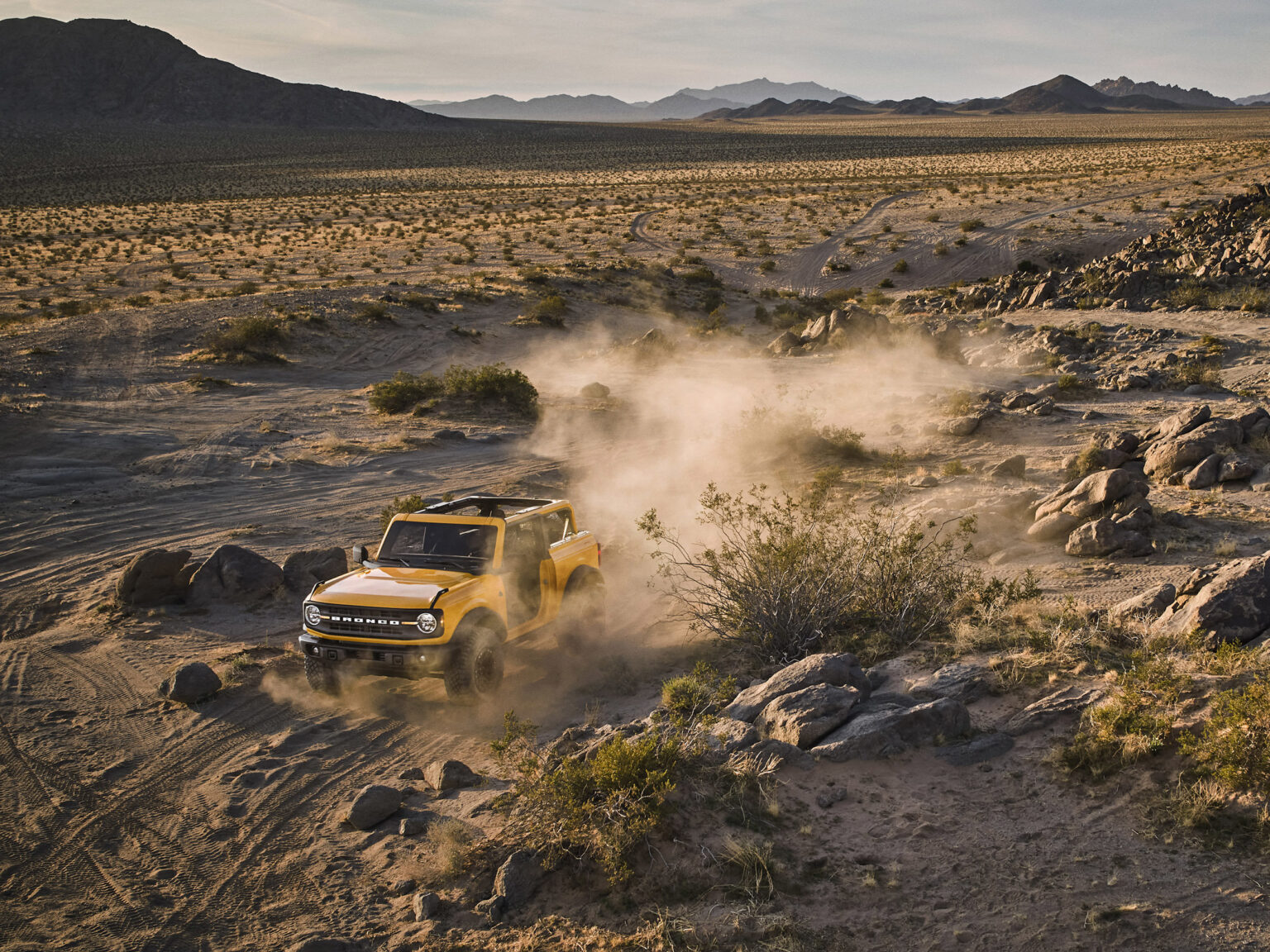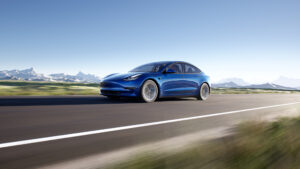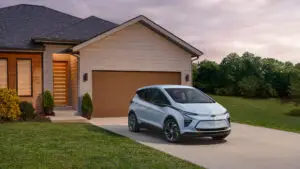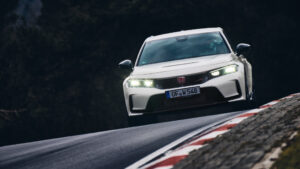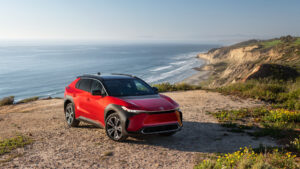The return of the Ford Bronco has been hotly anticipated for over a decade. It’s a product that has been rumored and speculated more than probably any other car in recent history. Finally, it is here. It’s real. It’s legit. It’s going to try to take sales away from the Jeep Wrangler.
The Jeep Wrangler is a sales darling. It holds its value well. Though it is only ever is completely updated about once a decade, and it still operates on some of the same basic principles it had since its inception in 1941. It’s rough. It’s hardly luxurious. But, if you’re going to go out on some of the roughest terrain on the planet, it’s the vehicle you want to take.
It’s a high bar to reach for. Up until now, no one has really taken Jeep on directly. Sure, the Nissan Xterra did and Toyota 4Runner will do most of what a Jeep can. But, the Wrangler hasn’t had a direct competitor in the modern marketplace. Until now.
Off-roading, like trucks, is a bit of a religion. Folks who are in the Jeep camp are unlikely to switch to the Ford Bronco. There’s also a swath of Ford fans out there who wouldn’t want a Jeep if it was given to them. But now that there’s serious competition, there will be a battle. It seems only appropriate to now, on the launch of the much-anticipated Ford Bronco, to compare it to the Jeep Wrangler to see if they’ve hit the mark. Perhaps they’ve even exceeded it?
Rock Crawling
The Jeep Wrangler is seen on streets and trails around the country. They’re popular in warm beach areas because you can remove the doors and the roof and take in the ocean or lake breeze. But that’s not really where the Wrangler shines. Rock crawling is what the Wrangler is particularly adept at, and rock crawling is a serious test of vehicle capability.
The 2020 Jeep Wrangler’s new EcoDiesel powertrain is muscular and smooth
Photo courtesy of FCA US LLC
A fully-spec’d Wrangler Rubicon has solid front and rear axles – like all Wranglers – that are sourced from Dana. The Dana 44 axles have front and rear lockers for improved grip. An electronic disconnecting sway bar allows for improved wheel articulation and traction. A low range transfer case helps with torque multiplication to help with getting power to the wheels. Standard all-terrain or selectable mud-terrain tires help with the actual gripping of the rock itself.
The Wrangler is even available with a winch-capable steel bumper group. No, the winch isn’t standard but a quick browse of the Mopar accessory catalog will find a nice synthetic Warn winch that’ll do the job nicely.
The Bronco will also be able to rock crawl. It doesn’t have a solid front axle like the Wrangler, which Jeep would likely claim as a weak point on the Bronco, but real-world testing hasn’t confirmed that yet. The Bronco does use Dana differentials in the front and rear. The rear axle is rigid like the Wrangler.
To grip the rocks, the Bronco has optional 35-inch tires straight from the factory. The Wrangler can support 35-inch tires without the need for an additional lift, but the standard tires only go as large as 33-inches in size.
Photo courtesy of Ford Motor Company
The Bronco also has a low speed transfer case. A seven-speed manual transmission features a special crawl gear to further enhance to torque multiplication of the transfer case to provide a class leading crawl ratio.
When equipped with the manual transmission, the Wrangler Rubicon with the 4.10 final drive has a crawl ratio of 84.2:1. The crawl gear on the Bronco, combined with the 4.70 rear end on the Bronco Badlands with the manual is 95.2:1.
Accessing the crawl gear on the Bronco is similar to putting it in reverse. The same collar that protects reverse protects crawl. Instead of up to the left, the crawl is down to the left.
Crawl ratio alone isn’t the be all, end all. But the Bronco should creep slower than the Wrangler.
The Bronco also features an electronic sway bar disconnect to help with wheel articulation. Ford claims the system can work in more scenarios, disconnecting during articulation and being able to reconnect under all conditions.
Photo courtesy of Ford Motor Company
The Jeep Wrangler Rubicon has a 44-degree approach angle on the two-door model and a 43.9-degree angle on the four-door model. The breakover angle is 27.8-degrees on the two-door and 22.6-degrees on the four-door. The departure angle is 37-degrees.
The Rubicon has 10.8-inches of ground clearance.
The fully tricked out Bronco Badlands with the Sasquatch package, which gets the buyer the 35-inch tires, has an approach angle of 43.2-degrees. It has a breakover angle of 26.3-degrees. The model has a 37-degree departure angle.
The two-door Bronco has a departure angle of 37.2-degrees
The Bronco Badlands Sasquatch has 11.5-inches of ground clearance.
Ford doesn’t break the two-door and four-door models up for determining angles, but the Wrangler wins the day slightly on approach and two-door breakover, while the Bronco wins against Wrangler four-door breakover. Departure angles are close to a tie.
Photo courtesy of FCA US LLC
General Off-Road Use
The extra ground clearance on the Bronco helps in a lot of ways during normal trail use. That includes water fording. At 5 mph, the Wrangler Rubicon can ford 30-inches of water. When equipped with the Sasquatch package, the Bronco can ford 33-inches of water.
The satellite navigation system in the Wrangler can keep track of where you’ve been, so you can find your way back and save your route. The Bronco, though, eliminates the need for you take trail maps with you at all.
The FordPass Performance App with off-road navigation will come populated with curated trail maps powered by class-exclusive trail content from NeoTreks’ AccuTerra Maps, Trails Offroad trail guides and FunTreks trail guides. Owners will also be able to map their favorite trails and upload and add them to the existing library. Additionally, owners can update the maps and mark them along the way. Is there a tree down? Mark it.
Photo courtesy of Ford Motor Company
Getting dirt and mud inside the vehicle is always possible when off-roading. That’s especially true on both the Bronco and Wrangler, because owners will be able to remove the roof and doors. Both vehicles offer drain plugs for hosing out the interior.
I reached out to both automakers to see how water affects the precious infotainment systems in each of the vehicles. The Uconnect infotainment system is protected against the elements and is even subjected to a “mist test” to ensure that it can get a little damp and handle an unexpected shower. However, one should not point the hose directly at the infotainment.
A Ford spokesperson said the basically same thing. The surfaces and electronics can handle getting a little wet – again, unexpected rainstorm, for example – but it’s not designed to take a hose directly to it.
The Jeep has available accessory switches to power lights, winches and other devices. The Bronco has something similar. Inside, the Bronco takes it a step further by having a mounting bracket on the top of the dash to mount a phone mount, GoPro mount, GPS mount and more. There’s even power at the top of the dash so that wires don’t need to be dangling throughout the cabin for power.
Photo courtesy of Ford Motor Company
Ford said that when they looked at how people off-road, they looked at Polaris RZR riders. The accessory mounting is one idea they adopted from Polaris and incorporated into the Bronco.
When it comes to off-road features, the Bronco’s mapping software is far superior to what is offered from Jeep. Both vehicles make it easy to clean with the drain plugs and can handle an oops if you forget to put the roof back on and it rains. Jeep plans for exterior accessories for owners, but the added compatibility inside the truck on the Bronco gives them the edge.
Technology
Both brands offer GPS mapping, satellite radio, and support for Apple Car Play and Android Auto. Jeep’s Uconnect infotainment system is available in 7- or 8.4-inch displays and is widely regarded as one of the easiest-to-use systems out there.
On the Bronco, buyers get either an 8- or 12-inch SYNC 4 system with support for wireless Apple Car Play and wireless Android Auto.
Both vehicles offer a variety of advanced safety features, including autonomous emergency braking and adaptive cruise control.
Photo courtesy of FCA US LLC
Ford’s SYNC system has come a long way in usability, and the idea of not having to plug the phone into the system to use Car Play or Android Auto is appealing. Just toss the phone on the wireless charging pad and go.
Jeep will likely address some of these technological differences in future updates of the Wrangler. Ford has the advantage here simply because the vehicle is newer – the Wrangler has been on sale since 2018.
Engines and Transmissions
The base engine on a Jeep Wrangler is a 3.6-liter V6 mated to either a six-speed manual transmission or an eight-speed automatic. It makes 285 horsepower and 260 pound-feet of torque. Upgraded engines include a turbocharged 2.0-liter four-cylinder making 270 horsepower and 295 pound-feet of torque, a 3.0-liter EcoDiesel making 260 horsepower and 442 pound-feet of torque. Those upgraded engines all require selecting an automatic transmission.
A 10-speed automatic or the aforementioned seven-speed manual with crawl gear is available on the 2021 Ford Bronco. The base engine is a 2.3-liter EcoBoost four-cylinder making an expected 270 horsepower and 310 pound-feet of torque. The upgrade engine is a 2.7-liter EcoBoost V6 making 310 horsepower and 400 pound-feet of torque.
Photo courtesy of Ford Motor Company
Nobody outside of Ford has driven the Bronco yet, but the 2.3-liter and the 10-speed is a good combination in the Ranger, and the 2.7-liter and 10-speed in the F-150 is a personal favorite combination of mine.
But, the diesel in the Wrangler is a superstar. It fits the character of the Wrangler well and delivers an EPA-rated 29 mpg on the highway.
Roof and Doors
The Wrangler’s doors are removable, as is the roof. Removing the doors requires three bolts per door and disconnecting a wiring harness. The exterior mirrors are attached to the door on the Wrangler.
The Bronco has removable doors as well, and while I’m not sure about the procedure yet, I do know that the exterior mirrors are attached to the Bronco and not the doors, meaning they’re still there with the doors off. It means you can’t squeeze into a really tight space with the doors off, but you’ll still be able to use the mirrors and blind spot monitoring with the doors removed.
Photo courtesy of Ford Motor Company
As an added bonus, the Bronco’s doors can be stored in the back of the vehicle (there’s even bags for them). This means you don’t have to leave them behind at basecamp.
The fabric roof on the Wrangler is easy enough to remove, especially with no zippers. It doesn’t provide the best comfort in winter, though. There is an optional power sliding roof that a portion can be removed completely. Most owners opt for the 3-piece hardtop.
The two smaller panels on the hardtop can be stored on-board the Wrangler in the optional storage bag. Removing the big part of the roof is a challenge and requires more than one person and a steady hand.
The Bronco’s hardtop is a series of removable panels. While I haven’t seen them in use yet, it appears like the process might be easier for owners of the Bronco.
Pricing
A Jeep Wrangler starts at $29,790 including destination. A Ford Bronco starts at $29,995 including destination.
Final Assembly
The Jeep Wrangler has been built in Toledo, Ohio since the vehicle went into production. The Ford Bronco will be built just up the street at Ford’s Michigan Assembly Plant in Wayne, Michigan.
Photo courtesy of Ford Motor Company
Verdict
So who wins? That’s the existential question that was supposed to be solved by reading this story. I’ve driven many Jeep Wranglers – off-road all around the country – and I like the Wrangler a lot. It’s on-road manners leave a lot to be desired, but that’s expected with a solid front axle and 33-inch all-terrain tires.
The Bronco with 35-inch tires might not be much better, but the independent front suspension should help a little bit. But until I drive it, I can’t say for certain.
Surely there’ll be a ton of off-road comparison tests as soon as the Bronco hits dealerships. What I do know is I really like what I see with Bronco, and it has the credentials – at least on paper – to be the king of the off-roaders.
We’ll just have to wait and see for ourselves.

